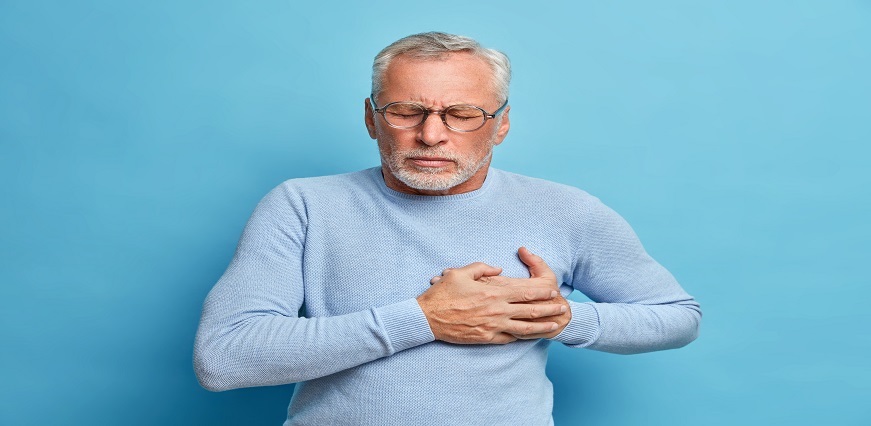


Max Lab
Oct 20, 2022
Bones are strong, active tissues which consist of living tissues that constantly break down and rebuild themselves. A human skeleton is structured by bones made up of minerals, mainly calcium salts bound together by strong collagen fibres. Bones have a thick and hard outer shell which can be easily seen on X-rays. If looked at carefully, the inside of a healthy bone has small spaces or pores, like a honeycomb. However, when an individual attains a certain age, the bones start to lose strength and density, resulting in Osteoporosis. The literal meaning of Osteoporosis is “porous bones”, where the bones become weak by age or certain other factors. All individuals have some degree of bone loss when they get older, but the term Osteoporosis is used when the bones become very fragile and the holes in the honeycomb structure become much larger, which often results in a fracture.
Anyone can get the condition, but women are most likely to develop osteoporosis than men. To raise global awareness of the prevention, diagnosis and treatment of the condition, World Osteoporosis Day is celebrated every year on 20th October 2022.
Osteoporosis in both men and women can be explained by understanding the following reasons:
Treating Osteoporosis in its early stages is the best way to prevent low bone density and ability to perform daily activities.
Osteoporosis often has no symptoms, which is why the condition is often known as a “silent disease”. The first sign that an individual may notice when they break their bone in a relatively minor fall or accident. To understand the condition in detail, here is a breakdown of Osteoporosis symptoms in the early and later stages.
Early-detectable symptoms of Osteoporosis are very rare, and people often don’t know when they have weak bones until they have broken a bone. However, some symptoms can indicate Osteoporosis which are mentioned below:
The best way to detect osteoporosis in the early stage is to a healthcare professional if an individual is facing certain issues that are abnormal and can point towards weak bone density.
Once an individual starts experiencing bone mass deterioration, the symptoms of later stages of Osteoporosis become obvious, which are:
Older age, menopause, ovaries removal surgery, low estrogen and testosterone count, smoking, history of Osteoporosis etc. are some of the root causes of Osteoporosis. An individual must consult a doctor to get timely treatment and make certain lifestyle changes to prevent the condition and live a healthy life.
Osteoporosis develops in the human body when there is an abnormal imbalance between bone formation and resorption. It is a condition where bone formation happens very slow, and bone resorption happens very quickly, in contrast. Some of the causes of Osteoporosis are:
Certain medications, like steroids, are used to treat a number of inflammatory conditions. But in return, they can affect the production of bone by reducing the amount of calcium and increasing calcium loss. If an individual is on steroids for more than three months, the doctor might also recommend calcium and Vitamin D tablets to help prevent Osteoporosis.
If an individual has early menopause, they are at a higher risk of developing Osteoporosis as ovaries stop producing Estrogen. Women who undergo hysterectomies also are most likely to develop osteoporosis, and this is because they cause the body’s estrogen production to reduce dramatically.
People with a rare genetic disorder called Osteogenesis are most like to develop fractures and have low bone density. The risk of Osteoporosis is greater in an individual who has elderly relatives with bone fractures. Individuals with a fracture in the vertebrae are also at increased risk for Osteoporosis.
Exercise encourages bone development which makes bone stronger with time. People who are physically inactive are at a greater risk of developing osteoporosis.
Vitamin D and Calcium are both very important in maintaining healthy and strong bones. It is important to keep a healthy diet throughout the lifecycle and take the optimum amount of sunlight to maintain healthy and strong bones.
Tobacco and alcohol are directly toxic to bones. In women, smoking and drinking reduce the amount of oestrogen and in men, it reduces the amount of testosterone activity which can ultimately weaken the bones.
There are osteoporosis tests that a healthcare professional might recommend to an individual for diagnosing Osteoporosis on case to case basis. The possible tests include:
To give clear information about the bone health of an individual, a doctor might suggest a Bone Mineral Density test which is also known as dual-energy X-ray absorptiometry. Here, small amounts of radiation are used to determine how solid the bones are. The possible results of the BMD test are normal, where the risk of osteoporosis is very low; Osteopenia, where the bone becomes brittle but the risk of low-impact fracture is relatively small; and Osteoporosis, where an individual has a greater risk of low-impact fractures and may need a treatment further.
Vitamin D and calcium are both crucial in maintaining healthy and stronger bones. A Vitamin D test and Calcium test would signify if an individual has Vitamin D deficiency or Calcium deficiency and is at risk of developing Osteoporosis. A healthcare professional might recommend a Vitamin D or Calcium test if they suspect Oesteomalacia, soft bones, low bone density or rickets in an individual.
TSH blood test is helpful in determining if a person is at a higher risk of developing Osteoporosis. The thyroid hormone levels affect the rate of bone replacement at a higher level. Too much thyroid hormone in the body can speed up the rate at which bones are lost. Hence thyroid test helps in giving an indicator if Osteoporosis is a contributing factor.
The treatment for Osteoporosis at any stage is aimed at reducing or preventing bone fractures and maintaining or increasing bone density. There are many medications and lifestyle changes that can give fruitful results for Osteoporosis, but prevention is still very important. The medications recommended for Osteoporosis often have hormonal influences or stimulating agents to encourage bone growth in both males and females. It is often advised to take any kind of supplements or medications after the doctor’s suggestion only. Some of the lifestyle changes that an individual can indulge in are:
Heavy exercises like weight training, and running might not be recommended for individuals with an increased risk of Osteoporosis. However, light exercises like walking, jogging, climbing stairs etc. can help an individual build stronger bones.
To live a healthy life with healthier bones, an individual must take enough amount of sunlight on a daily basis and include food like fortified milk, eggs, fish etc. in their diet. Vitamin D is one of the most crucial elements that makes the bones stronger and helps the body in absorbing calcium.
Smoking and alcohol consumption both have dramatic effects on the bone density of individuals. It is advisable to consult a doctor if a person wants to quit alcohol or smoking, which may help in preventing Osteoporosis in the long run.
Calcium requirements to have stronger bone density might differ from person to person. To add enough calcium to the diet, low-fat dairy products, broccoli, legumes, beans, kale, bread, eggs, cereal, almond milk etc. can help in preventing Osteoporosis.
Osteoporosis is a condition which results in thinner and more brittle bones due to the body’s inability to make new bones. The condition generally has no symptoms and an individual might not notice Osteoporosis until they’ve broken a bone. If an individual is going through any such condition that might be an indication of osteoporosis, it is important to consult a doctor to diagnose the condition and create a treatment plan as the next step.
World Osteoporosis Day is celebrated to promoting global awareness of the prevention, diagnosis, and treatment of osteoporosis and related musculoskeletal conditions.
World Osteoporosis Day is celebrated globally on October 20th each year.






Comments